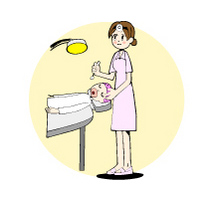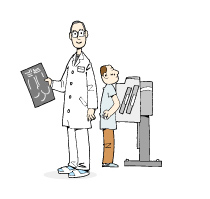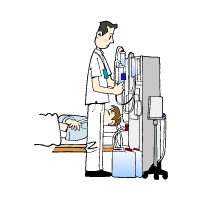男女平等ランキングで日本は世界110位【国際】

【日本は先進国の中で最大の男女格差】
ダボス会議を主催する世界経済フォーラム(WEF 本部ジュネーブ)は昨年12月、世界149か国を対象としたジェンダー・ギャップ(男女格差)指数を公表しました。ジェンダー・ギャップ指数とは、男女の格差を経済、教育、健康、政治の4分野・14項目にわたって分析して指数化したものです。国別ランキングは各分野の総合評価となっており、日本は110位で2017年の114位からわずかに上昇したものの、G7の中では最下位となっています。
Japan ranked 110th in global gender equality rankings for 2018
【Japan has the highest gender gap among developed countries】
The World Economic Forum (WEF), based in Geneva, Switzerland, released the Global Gender Gap Report 2018, reviewing 149 countries on the basis of their gender parity. These 149 countries are ranked on the basis of 14 indicators in four categories: Economic Participation and Opportunity, Educational Attainment, Health and Survival, and Political Empowerment. Although Japan was placed 110th in the World Economic Forum's global gender equality rankings for 2018, it faired the lowest among G7 industrialized nations.
 - ジェンダー・ギャップ指数とは -
- ジェンダー・ギャップ指数とは -世界経済フォーラムとは、世界を代表する政治家や経営者、学者などがスイスのダボスに集まり、世界が直面する重大な問題について議論する国際機関で、「ダボス会議」とも呼ばれています。また、国際問題について議論するとともに、国や経済の競争力を計る「国際競争力レポート」などの研究報告書もまとめています。その中の一つに2006年以降、毎年公表されている「世界ジェンダー・ギャップ報告書」があります。
ジェンダー・ギャップ指数とは、国ごとの男女の格差を図る指数で、①経済分野(給与、雇用、管理職や専門職での男女格差など)②教育分野(識字率、初等教育や中等・高等教育就学率の男女比など)③健康分野(出生数の男女比、平均寿命の男女比)④政治分野(国会議員の男女比、閣僚の男女比、国家元首の在任年数の男女比など)の4分野のデータを基にしています。指数の算出には、国際労働機関(ILO)、国連開発計画(UNDP)、世界保健機構(WHO)などの公的データが使用されています。指数は0から1の数値で表され、0が完全不平等、1が完全平等を意味しています。
- What is the Global Gender Gap Index? -
The World Economic Forum is an independent international organization committed to improving the state of the world by political, business and cultural leaders. It is held in Davos, Switzerland and is commonly known as the Davos Forum. In addition to discussing international issues, the World Economic Forum publishes the Global Competitiveness Report. The World Economic Forum has produced a Global Gender Gap Report every year since 2016.
The Global Gender Gap Index examines the gap between men and women across four fundamental categories : ①Economic Participation and Opportunity - the gender wage gap , the gender employment gap ,the gender leadership gap ②Educational Attainment - the gender gap in literacy achievement, the gender gap in educational attainment ③Health and Survival - the ratio between male and female at birth and life expectancy at birth ④Political Empowerment - female to male ratio of Parliamentary seats and ministers. The data from International Labor Organization (ILO), United Nations Development Programme (UNDP), and World Health Organization (WHO), etc. are used to calculate the index. The Global Gender Gap Index is based on scale ranging from 0 (imparity) to 1 (parity).
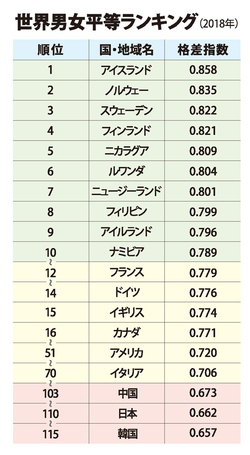 - ランキングの上位を占める北欧勢 -
- ランキングの上位を占める北欧勢 -ランキングの上位を占めているのは北欧諸国です。アイスランドは10年連続で首位となり、4位のフィンランドまで北欧の国が並んでいます。ノルウェーは、世界で最初に議員などの割合をあらかじめ一定数割り当てる「クオータ制」を取り入れた国としてよく知られています。
北欧の国々が上位を占めているのは、ノルウェーにみられるように国会議員の男女比や女性閣僚など政治分野で高い指数を叩き出している他、経済分野でも女性の参加度が高く、専門職や技術職、管理職に多くの女性が就いているためです。
アフリカなどの発展途上国が上位を占めているのは、政治の混迷や長引く内戦などで多くの男性が国外に流出したり命を落としたことが影響しているようです。国内の混乱の結果、女性の政治家や働く女性が増加したために、女性の経済的参加度や政治参加が非常に高くなっています。東アフリカに位置するルワンダでは、憲法で女性議員数が全体の3割を超えるように定められ、女性の国会議員の割合は世界一となっています。
- Nordic countries occupy top positions -
The Nordic countries occupy top positions. Iceland tops the list for the 10th consecutive year. Finland occupies the fourth position, and Nordic countries occupy the top four positions.
Norway was the first country to introduce a quota for female board members. Along with a higher degree of gender equality in economic field, many women are in technology jobs and managerial positions.
African countries rank highest for gender equality. As a result of domestic conflicts and prolonged civil wars, the number of women parliamentarians and working women has risen, and women's political participation and women's economic participation have increased. Rwanda in Central East Africa sets a quota of at least 30 percent women Parliament members. It has the most women in Parliament in the world.
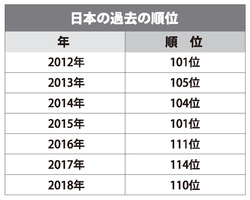 - 政治・経済分野で指数を落とす日本 -
- 政治・経済分野で指数を落とす日本 -日本の総合ランキングは110位(0.662)で、2012年から100位台と低迷し続けています。17年の114位(0.657)に比べると、少し改善されたもののG7では最下位となっています。
日本の4分野の内訳は、政治分野は125位(0.081)、経済分野は117位(0.595)、教育分野は65位(0.994)、健康分野は41位(0.979)です。教育と健康分野は、順位こそ50位前後ですが、指数で分かるように満点に近い数値を示し、上位の国々と大差ありません。順位を落としているのは、政治と経済分野で女性の社会進出が大幅に遅れているためです。
2018年6月現在、女性の国会議員比率は衆議院で10.1%、参議院では20.7%です。同年10月の安倍改造内閣では、女性が活躍する社会の実現を謳いながらも入閣した女性閣僚は僅か一人に過ぎません。地方議会でも女性議員が占める割合は低く、全国1788ある地方議会のうち、約2割に当たる345の市町村議会で女性議員はゼロとなっています。
働く女性の割合は毎年増加しています。しかし、厚生労働省の2017年の調査によると、労働力人口総数に占める女性の割合は43・4%、管理職では15%程度に止まっているのが実情です。
- Japan's gender gap score in political empowerment and economic participation is low -
Japan was placed 110th (0.662) in the World Economic Forum's global gender equality rankings for 2018. It has remained sluggish since 2012. Although the ranking improved four places from the previous year, Japan ranked worst of G7 nations.
In the category of political empowerment, the index for Japan was 125th (0.081), 117th(0.595)in the category of economic participation and opportunity, 65th(0.994)in the category of educational attainment, 41st(0.979)in the category of health and survival. The categories of educational attainment and health and survival are relatively more advanced than other categories. Japan received poor marks for political empowerment due to low proportions of female legislators and cabinet ministers.
As of June 2018, the percentage of women in the House of Representatives stands at 10.1 percent, the percentage of women in the House of Councilors stands at 20.7percent. Japan’s Prime Minister, Shinzo Abe, appointed just one woman to his new cabinet despite the slogans such as “Make women shine” in October 2018. The ratio of women in local government seats is also low. Local bodies across Japan with no female members accounted for 345 of 1,788, or almost 20 percent.
The number of women in the workforce is increasing. Japan's female labor force participation rate was reported at 43・4%, according to the Ministry of Health, Labor and Welfare Ministry's survey for 2017. Women in managerial positions only account for 15%.
- 女性が活躍する社会をめざして -
2012年12月に発足した第二次安倍内閣は、「女性が働きやすい環境を整え、社会に活力を取り戻す」という目標を掲げ、16年4月に「女性活躍推進法」が施行されました。この法律で、「国や自治体、大企業などに対し、役員や管理職など指導的な地位のある女性の割合を2020年までに30%に引き上げる」という方針を掲げていますが、まだ成果が出ていません。
2018年5月には、選挙で男女の候補者ができる限り均等になるように「政治分野における男女共同参画の推進に関する法律」、いわゆる「候補者男女均等法」が成立し、今年4月の統一地方選挙や7月の参議院選挙などから適用されます。法律には罰則規定は設けられていませんが、法律の趣旨を受けて各政党や政治団体などは積極的に女性の人材発掘や育成に取り組むものとみられます。その取り組みを注意深く見守っていきましょう。
政府は女性が政治や経済分野に進出できるよう、さまざまな対策を打ち出しています。しかし、日本の社会は、長年にわたって家事や育児は女性が担うという価値観が根強く残っています。企業においても結婚や出産を機に退社する女性が多いため、責任ある仕事から避けられてきました。子育てが一段落した女性が仕事に復帰しても、その多くは責任ある仕事ではなくパートなど非正規労働に従事しているのが現状です。
社会の多様化が進み、少子高齢化が深刻化する今日、働く女性を増やすことは切実な課題です。このため、従来の価値観を見直し、女性が積極的に政治や経済分野に進出できる働きやすい社会環境の整備が急がれます。
- To realize a society where women shine -
The second Abe government that started in December 2012 set policy goals: "To realize a society where women can shine, and contribute to the revitalization of the Japanese economy". It has set the goal of having 30% women in leadership positions by 2020, but it has not yet achieved.
The law to promote an increase in female members in the national and local assemblies was passed in May 2018. The law is named, Law to promote joint participation by men and women in political field. It is commonly called, “Candidate gender equality law”. The law will start to be applied the next unified local elections scheduled for April 2019 and the next Upper House election in July. It demands that political parties make efforts to increase the number of female candidates although it has no punitive clause. We need to watch over the progress carefully.
The government attempts to encourage more women to join the workforce. Traditionally, the mother takes care of the household and provides childcare in Japan. Mothering is considered an occupation. Because many women leave their jobs for marriage and childbirth, companies do not give them heavy tasks. Instead of entering back into the workforce in high-power positions, women are returning to part-time, low-paying jobs after giving birth to their child.
The advance in the declining birthrate and aging population has become severe in Japan. A solution to this problem is to get more women working. Government policies are being rapidly developed to address these roadblocks. Authorities must work to change the culture of work itself by establishing a better social environment.





